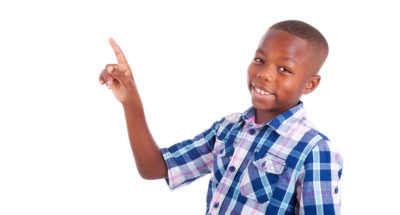
Finger Tracing: Mindful Breathing for Students
Students learn to trace the outline of their fingers in rhythm with their in-and-out breath pattern, which helps to develop their attention skills.

Students learn to trace the outline of their fingers in rhythm with their in-and-out breath pattern, which helps to develop their attention skills.
Students will:
Mindful Moments with JusTme (#6 Finger Tracing) from YoMIND on Vimeo.
What’s up, y’all?
I’m here to give you a mindfulness tool to calm your mind and strengthen your ability to focus.
This technique is a finger-tracing practice where we mindfully breathe and trace our fingers at the same time.
It’s simple and fun.
I like to do this technique when I don’t have a place to do a mindful sit, and I notice that I need to calm down and get more focused.
So this is how to do it.
First, I will show you how to do it; then we will practice together.
Let’s get to it!
Take one of your hands and hold it up like this—spreading your fingers wide like this.
We’ll use the pointer finger on the other hand to do the tracing.
We’ll match our movements with our breath like this—
As you move your finger up, breathe in,
And when we trace down, breathe out.
So it’s kind of like we are tracing our breath with our fingers.
This is how it works.
We’re going to go all the way to the other side of the hand and then come all the way back.
Breathing in deeply—and exhaling gently.
We will practice three rounds of going forward and then back, but when you are on your own, you can do it as many times as you want.
Now, let’s do it together!
We will keep our eyes open and focus on finger-tracing our hand as we breathe.
So here we go.
Sitting up tall [and comfortably], with your tracer finger and your hand up like this.
Bring your tracer finger to the base of your thumb and let’s get to it.
[Practice three rounds of tracing: breathing in, breathing out, and pausing at the top and bottom of each finger]
Awesome job!
Now before we finish up, let’s say nice kind, loving words to ourselves.
Let’s bring our hands over our hearts.
I will say some things out loud, and you can say them to yourself in your head or in a soft whisper.
Repeat after me.
It’s okay to be awesome.
I am awesome.
It’s okay to be great.
I am great.
When I work hard, and set my mind to it, I can do it.
I can be my best.
I can do my best, because I am my best.
Now inhale; arms up overhead—full body stretch.
And as you bring your hands down, go ahead and slowly open your eyes.
Great job, y’all.
Taking journeys like that to our inside world helps us to deal with what’s going on in our outside world—especially when we feel more distracted.
It does take practice, but over time, practicing mindfulness can strengthen your mind and your body so that you can be your best self.
Great job. I’m proud of you. Be proud of yourselves.
Let’s get a Fist Bump Dab in one time. On the count of three: 1, 2, 3!
Love you all. Respect y’all.
Please love and respect yourselves.
Love and respect each other, and take care of your mind.
I’ll see you all again real soon.
Source: yomind.com
How did you and your students respond to this practice? Was everyone calmer and more focused?
While research on the effects of mindfulness on young children is still in the early stages, a 2016 review of 12 studies suggests some promising outcomes for young children relative to attention, self-regulation, and motor skills. A 2014 meta-analysis that focuses on 24 studies of K-12 students showed changes in students’ attention and resilience to stress, including positive emotions, self-esteem, and self-concept. And a 2019 targeted review of mindfulness interventions with young adolescents indicated multiple benefits to their well-being.
“Mindful breathing” is a simple process—it involves observing the breath and redirecting attention to the breath when the mind wanders. Yet it can be challenging (and sometimes disconcerting) to focus on the breath alone, so this activity gives children another anchor for their attention: finger tracing.
This kinesthetic and sensory act of mimicking the breath can provide additional grounding for students who might feel easily carried away by other emotions and thoughts. As a result, students who practice mindful breathing regularly may feel less anxiety, more focus, and a greater sense of calm in the classroom.

Do you want to dive deeper into the science behind our GGIE practices? Enroll in one of our online courses for educators!
Comments